Industry and trade
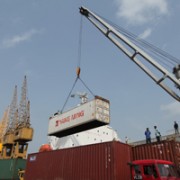 Governance and public sector management
Governance and public sector management
 Finance sector development
Finance sector development
 Industry and trade
Industry and trade
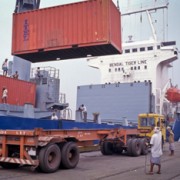 Industry and trade
Industry and trade
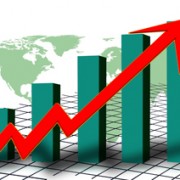 Social development and protection
Social development and protection
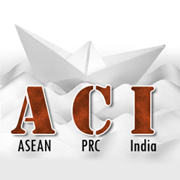 Governance and public sector management
Governance and public sector management
 Industry and trade
Industry and trade
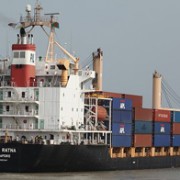 Industry and trade
Industry and trade
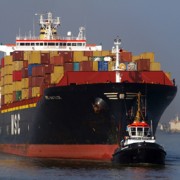 Education
Education

Economic integration and trade liberalization in South Asia

Thanks to its sustained economic growth over the last several decades, Asia has become the world’s most dynamic region. Maintaining this impressive growth rate, however, requires market integration to ensure the free flow of goods, services, and capital across borders (ADB 2013). Indeed, interplay of market forces and increased participation in trade have been decisive in the growth of emerging Asian economies. Until now, most of Asia’s final goods have been exported to Europe and the United States. Access to large markets allowed Asian countries to exploit their economies of scale on the one hand, and stimulate growth in their productive sectors on the other. With the rise of Asia, it is time for these countries to cooperate and become an integrated market of their own.
Think Tank challenge: Surviving the competition

The growth of public policy research organizations, or think tanks, over the last few decades has been nothing less than explosive. Not only have these organizations increased in number, but the scope and impact of their work have also expanded dramatically. The potential of think tanks to support and sustain responsible governments and civil societies is far from exhaustive as policymakers worldwide face a common problem of bringing expert knowledge to bear in their decision making.
Few firms in the PRC and India use capital markets to obtain financing and grow

One of the most notable developments in the world economy over the past 20 years has been the rise of the People’s Republic of China (PRC) and India as global economic powers, accompanied by high overall growth and an increase in their financial activity. But how much have the PRC and Indian firms used and benefitted from the expansion in capital markets to obtain financing and grow? In a new paper (Didier and Schmukler, 2013), we study this question by assembling a unique and comprehensive data set on domestic and international capital raising activity and performance of publicly listed Chinese and Indian firms.
Why Indian business should embrace the RCEP

Mega regional trade deals are in vogue in a fragile world economy as a means to spur trade and growth. Asia’s mega regional trade deal—the Regional Comprehensive Economic Partnership (RCEP), which includes India—is quietly being negotiated. But it deserves more press because the RCEP would create the world’s largest trading bloc and have major implications for Asian countries and the world economy. India is an important player in the RCEP negotiations but some Indian businesses are concerned about the prospect of further Indian trade with, particularly imports from, the People’s Republic of China (PRC). What would the RCEP cover and will Indian business benefit? What are the barriers to success and what should be done to overcome the hurdles?
RCEP and TPP: Next stage in Asian regionalism

According to a report by the Asian Development Bank (2008), “Asia’s economies are increasingly vital to each other and to the world. Asia’s output today roughly equals that of Europe or North America, and may well be 50% larger than theirs by 2020, in terms of purchasing power parity.” Moreover, with both the US and Europe continuing to post low GDP growth of 1% to 2.5% annually, the center of the recovery has shifted to Asia. These factors became apparent during the November 2012 ASEAN summit, when Asia saw two different approaches to trade liberalization. One is the ASEAN-led Regional Comprehensive Economic Partnership (RCEP) and the other is the US-led Trans-Pacific Partnership (TPP).
The emerging ACI economies: Does a rising tide lift all boats?

Over the past 20 years, the emerging economies of ASEAN, the People’s Republic of China (PRC) and India (ACI) have enjoyed spectacular economic growth. Together they have tripled their share of global GDP measured on a purchasing power parity basis from 11.2% in 1980 to 31.3% in 2010. By 2030, based on current consensus forecasts, their combined share could reach almost half of world output. If these forecasts are correct, by 2030, Singapore will achieve United States (US) living standards, the PRC will be on the verge of developed country status (about 60% of US levels), and relative to the US, India should be just above where the PRC is today in per capita terms.
How sustainable are the BRICS economic and social policies?

The BRICS countries—Brazil, Russian Federation, India, People’s Republic of China (PRC) and South Africa—have been the recipients of much admiration for their high growth rates, which have helped to increase their share in the world economy and reduce global poverty. However, doubts have grown as to whether the process of income convergence will continue. “Sustainable governance” in the BRICS, or rather the lack thereof, lies at the heart of these doubts. The Sustainable Governance Indicators (SGI) study by the Bertelsmann Foundation, a German think tank, sheds light on the status of sustainable governance among the BRICS countries. The study found that economic and social governance appears sustainable in Brazil and the PRC, India is in the middle, and the Russia Federation and South Africa follow the least sustainable economic and social policies among the five BRICS.
The role of Trans-Pacific Partnership in US trade policy

The Trans-Pacific Partnership (TPP) is akin to other free trade agreements (FTAs) that the United States (US) has negotiated over the past two decades that are aimed at opening markets and providing new opportunities for US goods, services, and firms. The TPP is the first FTA to be negotiated by the Obama Administration. The three FTAs (with Colombia, the Republic of Korea, and Panama) that the Obama Administration implemented in 2012 were negotiated and signed by the prior administration. The TPP will be the most significant FTA that the US has negotiated since the North American Free Trade Agreement (NAFTA) with Canada and Mexico, which entered into force in 1994.
Policy challenges posed by Asian FTAs

Asian economies face important policy challenges regarding the use of free trade agreements (FTAs): primarily their scope and their impact on regionalization trends. These topics are the front line of contemporary negotiations and of interest to policymakers. This column examines these challenges based on new data on the business impacts of FTAs and contents of existing FTAs. It also discusses political economy considerations of FTA consolidation in Asia and its potential connection with North America and Europe. Asia’s rise as the “global factory” over the past several decades was underpinned by outward-oriented development strategies and multilateralism. FTAs, as trade-policy instruments in the region, were largely absent until the 1990s.
Japan’s deglobalization

Around the world, students at the best universities are experiencing a more international upbringing than their parents. Japan, however, stands apart because of its continued seclusion. In particular, the decline of the number of Japanese students at leading United States (US) institutions is startling: In 1998–1999 there were 705 Japanese enrolled at three of the best US universities—Columbia, Harvard, and MIT—but this number had dropped to 339 by 2011–2012. Enrollment has also declined over the past seven years at Yale and UC-Berkeley. Overall, the figure of 46,872 Japanese studying in the US in 2000–2001 had dropped to 19,966 by 2011–2012. We also looked at doctoral candidates in several renowned, mostly US English-speaking universities in business, economics, and science.


Search
Subscribe / Connect to Asia Pathways
Subjects
- Agriculture and natural resources
- Blog
- Capacity development
- Climate change
- Economics
- Education
- Energy
- Environment
- Finance sector development
- Gender
- Governance and public sector management
- Health
- Industry and trade
- Information and Communications Technology
- Infrastructure
- Miscellaneous
- Population
- Poverty
- Private sector development
- Regional cooperation and integration
- Sanitation
- Social development and protection
- Transport
- Uncategorized
- Urban development
- Video Blog
- Water
Recent Posts
- Artificial intelligence: A new driver for inclusive growth and development?
- Increasing trust in cross-border e-commerce and artificial intelligence
- Enhancing access to maternal and newborn healthcare in developing Asia
- Can electric vehicles lead the way to a sustainable future?
- Mitigating climate-related sovereign risk to accelerate action on the climate emergency




Recent Comments